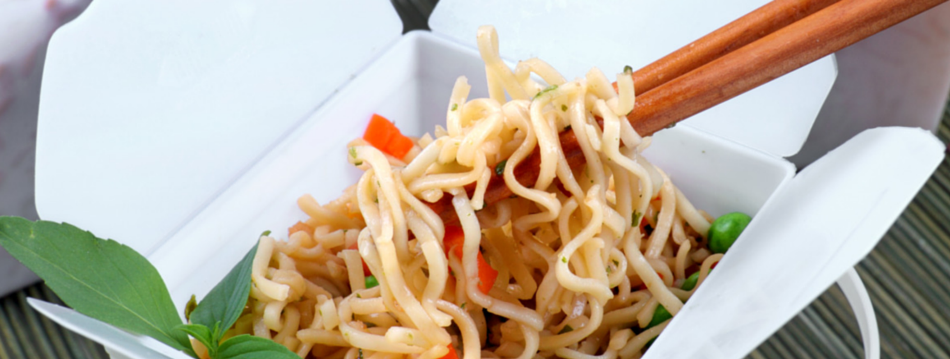.jpg)
The phrase REAL FOOD seems to be everywhere lately and I’ve started to wonder if what I think is real is the same as what other people consider real.What makes food real; or more pointedly, what make it un-real or fake? Certainly artificial colors, flavors, and additives aren’t found in real food, but what additives are fake, and which ones just have strange names. Whole Foods Market has a list on their website of ingredients they find unacceptable in foods, and it is a great starting point if you’re interested in cleaning up your act. I also recommend the book Pandora’s Lunchbox which is a real eye-opener!
Do you remember Susan Powter of 1980’s Stop the Insanity fame? My caveat here is I do find her fairly nutty, yet she had some really sound and simple advice that I offer to anyone trying to eradicate additives from their diets: shop the perimeter of the store. This can be tough if you’ve got kids who want cereal, and there are certainly some good, real foods to be found in the grocery aisles like canned beans (legumes), artichoke hearts, tuna, brown rice… If you want to make changes in how and what you eat, it can be challenging for you and your family to go cold turkey (so to speak). Though you can, you don’t need to start making everything from scratch. There is a broad continuum between Wonder Bread and homemade, whole grain bread.
In my (long) life I have found that it is easier to maintain a series of small changes than it is to radically, and suddenly change a lot. If you start with eliminating anything with artificial colors and flavors, for most Americans that would be a huge, positive change. Then there is high fructose corn syrup, which I think is at the heart (so to speak) of most of the health problems plaguing us today, and is in things where you might never even consider looking for it; read the ingredients on your fat free half and half (even the unflavored ones). Stepping or driving away from the drive through window could cause many people to wonder ‘what do I eat now?’ and ‘how do I make it?’ I assure you, it’s not that hard.
I am excited about people embracing whole/real foods. It means a return to the kitchen, a return to the dinner table and a revival of the dying art of home cooking. I’m sure you’re not surprised that I am all for home cooking. One of the things I feel quite passionate about is making cooking easy and do-able for anyone. I applaud you if you’re considering taking on “Mastering the Art of French Cooking” but if you don’t know how to scramble an egg you might want to set the bar a bit lower and start with either Mark Bittman’s “How to Cook Everything” or Sheila Lukins and Julee Rosso’s “The New Basics“.
I am encouraged that more people are buying locally raised meats from farmers’ markets, and demanding that their grocery stores carry them. Consumers have more power than they realize. You vote with your dollars every time you shop. If customers demand humanely raised meats, and unprocessed foods more stores will carry more of those products. The more organic produce stores sell, the more they will offer. Don’t worry about Coca Cola and Pepsi, they will be just fine without your business.
I am hopeful that movements like 100 Days of Real Food are heralding a shift back to unprocessed food. That as more and more light shines on what processed food is doing to us, our children and our eco-systems so many people will start choosing unprocessed foods that the lack of demand will put an end to the industry. Eating real/whole food doesn’t have to cost more than a meal under the arches, or crown, and the long term costs are significant. I am overweight, but still quite healthy. I owe this in large part to the genetics of hardy, peasant stock, but also to a diet rich in whole foods, and home cooking.
When you read the labels on products you’re tempted to buy, skip the nutritional information, and head for the ingredients. If you wouldn’t keep that ingredient in your pantry, don’t buy it. If you’ve never heard of that ingredient, why eat it? If you eat real food, it doesn’t need to be vitamin enriched, enhanced or fortified. There are no rules to eating this way. This is not a contest, or a race. You can decide how far you want to go, and what you will or won’t give up. Even if you eliminate most processed foods from your diet you will be making a huge difference.
Here’s a tip, Apple=Real, Soda≠Real.
Cheers to your health!
Here is a great guide from 100 Days of Real Food

Image Courtesy of 100 Days of Real Food





.jpg)





Erica - Great post! I’ve recently been on a Real Food bender. I think my friends and family are a little confused by the whole subject.
nrlowell@comcast.net - Great! I hope some of those links are helpful.
What’s Really Real? | The Bloppy Bloggers... - […] The phrase REAL FOOD seems to be everywhere lately and I’ve started to wonder if what I think is real is the same as what other people consider real.What makes food real; or more pointedly, what make it un-real or fake? […]
Julie Chenell DeNeen - Really good. I’m so into food bloggers nowadays and appreciate all the work these wonderful people do for me so I don’t have to reinvent the wheel. With three kids, converting has been hard, but really good!